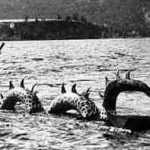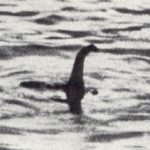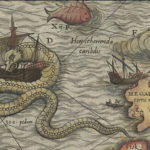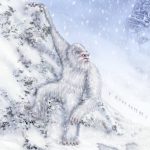Literally, dozens of private expeditions are carried out at the loch each year, too many to list here. This list is a summary of the major expeditions since 1933. The expeditions failed to uncover any specific evidence, which supported the evidence for the monster.
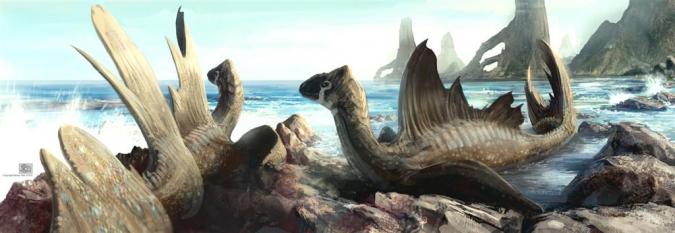
- 1933: Marmaduke Wetherell
- 1934: Sir Edward Mountain
- 1958: Cockrell
- 1960 Peter O’Connor
- 1960, 1961, 1962: Cambridge and Oxford Universities.
- 1961: Loch Ness Phenomena Investigation Bureau
- 1961, 1968, 1969, 1970: Birmingham University
- 1969: Field Enterprises.
- 1971, 1972, 1975, 1976. 1996, 1999: Academy of Applied Science
- 1972: Black and White Scotch Expedition
- 1973: Japanese Expedition.
- 1987: Operation Deepscan.
- 1993: Project Urquhart.
- 2007: BBC Expedition
Sir Edward Mountain Expedition (1934)
Edward Mountain decided to finance a proper watch in which 20 men with binoculars and cameras were positioned around the Loch from 9 a.m. to 6 p.m., starting 13 July 1934 and running for five weeks. Some 21 photographs were taken, though none was considered conclusive.
"Big Expedition" of 1970
During the so-called "Big Expedition" of 1970, Roy Mackal, a biologist who taught for 20 years at the University of Chicago, devised a system of hydrophones (underwater microphones) and deployed them at intervals throughout the loch. In early August a hydrophone assembly was lowered into Urquhart Bay and anchored in 700 feet (210 m) of water. Two hydrophones were secured at depths of 300 and 600 feet (180 m). After two nights of recording, the tape (sealed inside a 44 gallon drum along with the system’s other sensitive components) was retrieved and played before an excited LNPIB. "Bird-like chirps" had been recorded, and the intensity of the chirps on the deep hydrophone suggested they had been produced at greater depth. In October "knocks" and "clicks" were recorded by another hydrophone in Urquhart Bay, indicative of echolocation.
These sounds were followed by a "turbulent swishing" suggestive of the tail locomotion of a large aquatic animal. The knocks, clicks and resultant swishing were believed to be the sounds of an animal echo-locating prey before moving in for the kill. The noises stopped whenever craft passed along the surface of the loch near the hydrophone, and resumed once the craft reached a safe distance.
In previous experiments, it was observed that call intensities were greatest at depths less than 100 feet (30 m). Members of the LNPIB decided to attempt communication with the animals producing the calls by playing back previously recorded calls into the water and listening via hydrophone for results, which varied greatly. At times the calling patterns or intensities changed, but sometimes there was no change at all. Mackal noted that there was no similarity between the recordings and the hundreds of known sounds produced by aquatic animals.
Robert Rines’s studies (1972, 1975, 2001 and 2008)
In the early 1970s, a group of people led by Robert H. Rines obtained some underwater photographs. The underwater photos were reportedly obtained by painstakingly examining the loch depths with sonar for unusual underwater activity. A submersible camera with an affixed, high-powered light (necessary for penetrating Loch Ness’s notorious murk) was deployed to record images below the surface. Several of the photographs, despite their obviously murky quality, did indeed seem to show an animal resembling a plesiosaur in various positions and lightings. One photograph appeared to show the head, neck and upper torso of a plesiosaur-like animal. A rarely publicized photograph depicted two plesiosaur-like bodies. Another photo seemed to depict a horned "gargoyle head", consistent to that of several sightings of the monster. In 2001, the Robert Rines’ Academy of Applied Science videoed a powerful V-shaped wake traversing the still water on a calm day. The AAS also videotaped an object on the floor of the loch resembling a carcass, found marine clam-shells and a fungus not normally found in fresh water lakes, which they suggest gives some connection to the sea and a possible entry for Nessie.
Operation Deep Scan (1987)
In 1987, Operation Deepscan, the biggest sonar exploration of Loch Ness, took place. Twenty-four boats equipped with sonar were deployed across the whole width of the lake and they simultaneously sent out acoustic waves. BBC News reported that the scientists had made sonar contact with a large unidentified object of unusual size and strength. The researchers decided to return to the same spot and re-scan the area. After analysing the SONAR images, it seemed to point to debris at the bottom of the lake, although three of the pictures were of moving debris. Shine speculates that they could be seals that got into the lake, since they would be of about the same magnitude as the objects detected. Darrell Lowrance, sonar expert and founder of Lowrance Electronics, donated a number of sonar units used during Operation Deepscan. After examining the echogram data, specifically a sonar return revealing a large moving object near Urquhart Bay at a depth of 600 feet (180 m), Lowrance said: "There’s something here that we don’t understand, and there’s something here that’s larger than a fish, maybe some species that hasn’t been detected before. I don’t know."
Searching for the Loch Ness Monster BBC (2003)
In 2003, the BBC sponsored a full search of the Loch using 600 separate sonar beams and satellite tracking. The search had enough resolution to pick up a small buoy. No animal of any substantial size was found whatsoever and despite high hopes, the scientists involved in the expedition admitted that this essentially proved the Loch Ness monster was only a myth.
In 2008, Rines theorised that the monster may have become extinct, citing the lack of significant sonar readings and a decline in eyewitness accounts. Rines undertook one last expedition to look for remains of the monster, using sonar and underwater camera in an attempt to find a carcass. Rines believes that the creature may have failed to adapt to temperature changes as a result of global warming.

